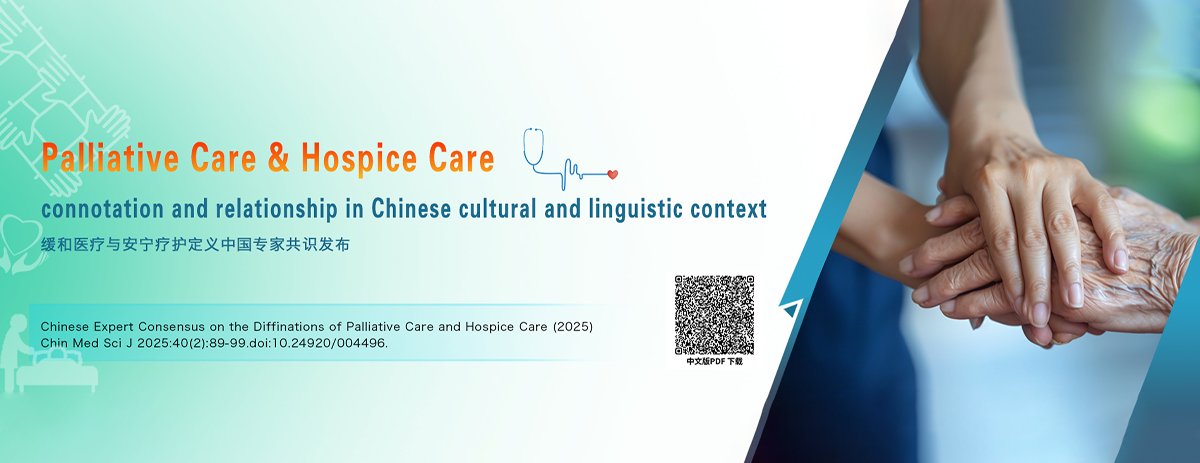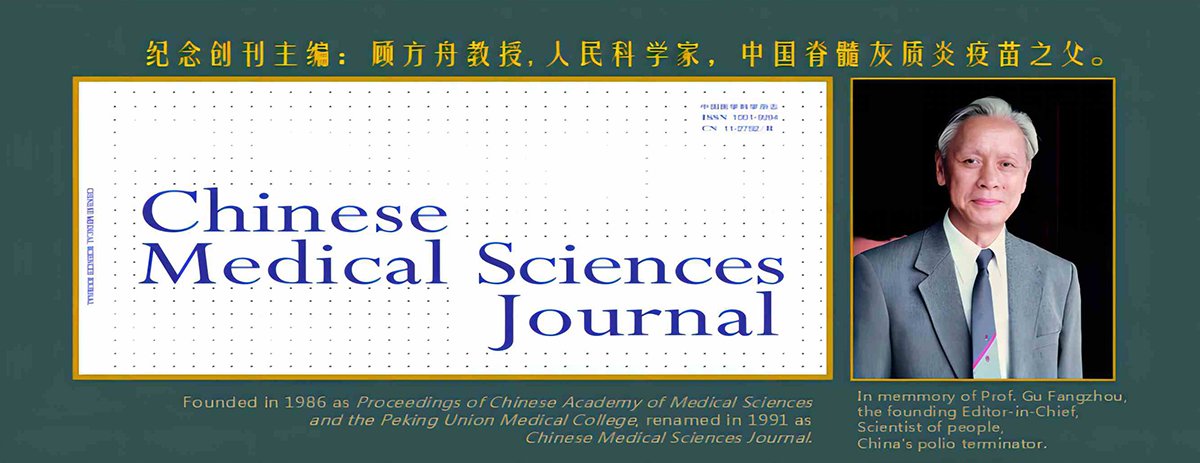Issue Ebook
cover story

Quick Entry
Submission
Guide for Authors
Peer Review
Editorial Office
- Latest Articles
- Articles in Press
- Achives
Volume 40 Issue 3,2025
Research Article
Multi-Phase Contrast-Enhanced CT Clinical-Radiomics Model for Predicting Prognosis of Extrahepatic Cholangiocarcinoma After Surgery: A Single-Center Retrospective Study Enhanced Publication AI Introduction
“In the field of extrahepatic cholangiocarcinoma (eCCA) treatment, a preoperative clinical-radiomics model has been developed and validated to predict overall survival (OS) and disease-free survival (DFS) in patients undergoing radical resection. The model, which includes clinical variables and radiomic features, shows promise as a tool for predicting 1-year OS and DFS in eCCA patients after radical surgery.”Abstract:ObjectiveTo develop and validate a preoperative clinical-radiomics model for predicting overall survival (OS) and disease-free survival (DFS) in patients with extrahepatic cholangiocarcinoma (eCCA) undergoing radical resection.MethodsIn this retrospective study, consecutive patients with pathologically-confirmed eCCA who underwent radical resection at our institution from 2015 to 2022 were included. The patients were divided into a training cohort and a validation cohort according to the chronological order of their CT examinations. Least absolute shrinkage and selection operator (LASSO)-Cox regression was employed to select predictive radiomic features and clinical variables. The selected features and variables were incorporated into a Cox regression model. Model performance for 1-year OS and DFS prediction was assessed using calibration curves, area under receiver operating characteristic curve (AUC), and concordance index (C-index).ResultsThis study included 123 patients (mean age 64.0 ± 8.4 years, 85 males/38 females), with 86 in the training cohort and 37 in the validation cohort. The OS-predicting model included four clinical variables and four radiomic features. It achieved a training cohort AUC of 0.858 (C-index = 0.800) and a validation cohort AUC of 0.649 (C-index = 0.605). The DFS-predicting model included four clinical variables and four other radiomic features. It achieved a training cohort AUC of 0.830 (C-index = 0.760) and a validation cohort AUC of 0.717 (C-index = 0.616).ConclusionThe preoperative clinical-radiomics models show promise as a tool for predicting 1-year OS and DFS in eCCA patients after radical surgery.Keywords:extrahepatic cholangiocarcinoma;radiomics;prognosis;retrospective study91|97|0Updated:2025-09-30Research Article
Clinical Characteristics and Risk Factors of Coronary Artery Disease in Patients with Hypertension and Persistent Atrial Fibrillation AI Introduction
“In a recent study, researchers at the People's Liberation Army General Hospital explored the clinical characteristics and risk factors associated with coronary artery disease in patients with hypertension and persistent atrial fibrillation. The prevalence of CAD among these patients was 66.41%, with age being the sole independent risk factor for CAD. Despite a high stroke risk, the utilization of oral anticoagulants remains alarmingly low.”Abstract:Background and ObjectiveHypertension (HT) and atrial fibrillation (AF) are highly prevalent cardiovascular conditions that frequently coexist. Coronary artery disease (CAD) is a major global cause of mortality. The co-occurrence of HT, AF, and CAD presents significant management challenges. This study aims to explore the clinical characteristics and risk factors associated with CAD in patients with HT and persistent AF (HT-AF).MethodsIn this retrospective cross-sectional study, data were collected from 384 hospitalized HT-AF patients at the People's Liberation Army General Hospital between January 2010 and December 2019. CAD diagnosis was confirmed by coronary angiography or computed tomography angiography. Clinical characteristics and comorbidities were compared between patients with and without CAD. Multivariate logistic regression analyses were performed to identify independent risk factors associated with CAD development.ResultsThe prevalence of CAD among HT-AF patients was 66.41% (255/384). Cardiovascular complications, particularly heart failure (44.7% vs 25.6%, P < 0.05), were significantly more prevalent in the CAD group than in the non-CAD group. Only age was identified as an independent risk factor for CAD (adjusted OR: 1.047; 95% CI: 1.022–1.073; P = 0.000). Of all HT-AF patients, 54.7% had a CHA2DS2-VASc score of ≥4, indicating high stroke risk. There was a slightly higher anticoagulant usage rate in the CAD group than those without CAD (8.6% vs 4.7%, P = 0.157), and the overall anticoagulant usage remained low.ConclusionThere is a high prevalence of CAD among hospitalized HT-AF patients, among whom age is the sole independent risk factor for CAD. Despite a high stroke risk, the utilization of oral anticoagulants is alarmingly low.Keywords:atrial fibrillation;hypertension;coronary artery disease;anticoagulants;prevalence;comorbidities45|108|0Updated:2025-09-30Research Article
Association Between Introversion Personality and Social Media Usage-Related Social Anxiety Among Chinese College Students: Chain Mediating Effects of Interaction Anxiousness and Mobile Phone Addiction Enhanced Publication AI Introduction
“In the field of social media usage and mental health, a study involving 979 Chinese college students reveals that introversion personality influences social media-related social anxiety, with interaction anxiousness and mobile phone addiction acting as sequential mediators. Targeting these factors may alleviate social anxiety among introverted students.”Abstract:Background and ObjectiveSocial anxiety arising from intensive social media usage (SMU) among adolescents and youth has gained extensive attention in recent years due to its negative influence on mental health and academic performance. In spite of that, there is a dearth regarding the etiology of SMU-related social anxiety. This study aims to further clarify the influence of introversion personality on SMU-related social anxiety and the mechanism underlying such an association and provide a new perspective for developing effective intervention strategies for the highly prevailing SMU-related anxiety among Chinese college students.MethodsA cohort of 979 college students (266 males and 713 females) aged 20.90 ± 1.91 years was enrolled in this cross-sectional study. Four measures including the "extroversion" domain of Eysenck Personality Questionnaire Revised, Short Scale (EPQ-R-S E), Interaction Anxiousness Scale (IAS), Mobile Phone Addiction Index (MPAI), and Social Anxiety Scale for Social Media Users (SAS-SMU) were used to evaluate the influence of introversion personality on SMU-related social anxiety that was potentially mediated sequentially by interaction anxiousness and mobile phone addiction. Hayes PROCESS was used for correlation and mediation analysis.ResultsInteraction anxiousness (indirect effect = -1.331, 95% CI : -1.559 - -1.122) partially mediated the association between introversion personality and SMU-related social anxiety. Besides, a sequential mediation of interaction anxiousness and mobile phone addiction in the link between introversion personality and SMU-related social anxiety was revealed (indirect effect = -0.308, 95% CI : -0.404 - -0.220). No significant mediating effect was found with mobile phone addiction in the association between introversion personality and SMU-related social anxiety.ConclusionTargeting interaction anxiousness and mobile phone addiction may represent an efficient strategy alleviating SMU-related social anxiety among Chinese college students with introversion personality.Keywords:introversion personality;social media;social anxiety;Chinese college students;interaction anxiousness;mobile phone addiction263|174|0Updated:2025-09-30Research Article
Postoperative Complications and 30-day Readmission in Patients Older than 80 Years with Chronic Kidney Disease after Hip Fracture AI Introduction
“Reporting on the latest medical research, a study delves into the prognosis of elderly patients over 80 with chronic kidney disease (CKD) following hip fracture surgery. The research, conducted at a single hospital from 2013 to 2021, analyzed postoperative complications, readmission rates, and mortality. It revealed that CKD patients faced higher risks of complications and readmission, underscoring the need for tailored care in this demographic.”Abstract:ObjectiveThis study aimed to explore the impact of chronic kidney disease (CKD) on prognosis of patients older than 80 years after hip fracture.MethodsThis retrospective, observational, single-center study included patients older than 80 years who underwent hip fracture operations between Feburary 2013 to June 2021 at our hospital. Patients were divided into CKD and non-GKD groups based on the estimated glomerular filtration rate (eGFR) < 60 mL/(min·1.73m2)] or not. Outcomes were the incidence of in-hospital postoperative infectious and non-infectious complications, 30-day readmission, and in-hospital death. Logistic regression analysis was used to calculate the odds ratio (OR) of CKD on these outcomes.ResultsA total of 498 patients were included, 165 in the CKD group and 333 in the non-CKD group. Eighty-seven (52.7%) CKD patients experienced 140 episodes of postoperative complications. In comparison, 114 (34.2%) non-CKD patients had 158 episodes of postoperative complications. CKD patients were more likely to have postoperative complications than non-CKD patients (OR = 2.143, 95% CI: 1.465-3.134, P < 0.001). CKD increased the risk of cardiovascular complications (OR = 2.044, 95% CI: 1.245-3.356, P = 0.004), acute kidney injury (OR = 3.401, 95% CI: 1.905-6.072, P < 0.001), delirium (OR = 2.276, 95% CI: 1.140-4.543, P = 0.024), and gastrointestinal bleeding (OR = 4.151, 95% CI: 1.025-16.812, P = 0.031). The transfusion rate (OR = 2.457, 95% CI: 1.668-3.618, P < 0.001) and incidence of 30-day readmission (OR = 2.426, 95% CI: 1.203-4.892, P = 0.011) in CKD patients were significantly higher than those in patients without CKD.ConclusionCKD is associated with poor postoperative outcomes in geriatric hip fracture patients. Special attention should be paid to patients with CKD.Keywords:chronic kidney disease;postoperative complications;outcome;hip fracture;geriatric patients46|173|0Updated:2025-09-30Think Tank Forum
Artificial Intelligence Applications in Fangcang Shelter Hospitals: Opportunities and Challenges AI Introduction
“Reporting on the latest advancements in pandemic response technology, Fangcang shelter hospitals are being enhanced with artificial intelligence to improve emergency preparedness and patient care. Expert research has established AI systems that address challenges in site selection, clinical support, and operational management, laying a foundation for the construction of more efficient and responsive healthcare facilities.”Abstract:Fangcang shelter hospitals are modular, rapidly deployable facilities that play a vital role in pandemic response by providing centralized isolation and basic medical care for large patient populations. Artificial intelligence (AI) has the potential to transform Fangcang shelter hospitals into intelligent, responsive systems that are capable of significantly improving emergency preparedness, operational efficiency, and patient outcomes. Key application areas include site selection and design optimization, clinical decision support, AI-assisted clinical documentation and patient engagement, intelligent robotics, and operational management. However, realizing AI's full potential requires overcoming several challenges, including limited data accessibility, privacy and governance concerns, inadequate algorithmic adaptability in dynamic emergency settings, insufficient transparency and accountability in AI-driven decisions, fragmented system architectures due to proprietary formats, high costs disproportionate to the temporary nature of Fangcang shelter hospitals, and hardware reliability in austere environments. Addressing these challenges demands standardized data-sharing frameworks, development of explainable and robust AI algorithms, clear ethical and legal oversight, interoperable modular system designs, and active collaboration among multidisciplinary stakeholders.Keywords:Fangcang shelter hospital;artificial intelligence;machine learning;large language model;robotics;emergency response71|176|0Updated:2025-09-30Think Tank Forum
“In the era of data-intensive research, this paper introduces its research progress in the field of data literacy. Expert xx proposed a comprehensive, lifecycle-oriented data literacy competency model tailored to biomedical research, which provides solutions to improve scientific data quality and achieve AI readiness.”Abstract:With the rise of data-intensive research, data literacy has become a critical capability for improving scientific data quality and achieving artificial intelligence (AI) readiness. In the biomedical domain, data are characterized by high complexity and privacy sensitivity, calling for robust and systematic data management skills. This paper reviews current trends in scientific data governance and the evolving policy landscape, highlighting persistent challenges such as inconsistent standards, semantic misalignment, and limited awareness of compliance. These issues are largely rooted in the lack of structured training and practical support for researchers. In response, this study builds on existing data literacy frameworks and integrates the specific demands of biomedical research to propose a comprehensive, lifecycle-oriented data literacy competency model with an emphasis on ethics and regulatory awareness. Furthermore, it outlines a tiered training strategy tailored to different research stages—undergraduate, graduate, and professional, offering theoretical foundations and practical pathways for universities and research institutions to advance data literacy education.Keywords:AI-ready;scientific data management;data literacy;competency framework;FAIR principles83|80|0Updated:2025-09-30
SEE MORE
- The First Palliative Medicine Development Conference Successfully Held in Nanning
- Empowering Palliative Care Teams with Global Expertise — a Communication of Enhancing Clinical Practice Skills
- "Ethical Challenges and Future Prospects of Genetic Technologies" Academic Seminar Successfully Convened in Beijing
- The 2024 Conference on Innovative Development and Application of Population Health Science Data was successfully held
Key-Words Cloud
Loading
Rankings  MORE
MORE
- 0 1 Chinese Expert Consensus on the Definitions of Palliative Care and Hospice Care (2025) 3243
- 0 2 Current Status and Future Suggestions for Innovative Drug Research and Development in China 1415
- 0 3 The "4+4" Medical Doctor (MD) Pilot Program at PUMC: Implementation, Performance, and Prospects 945
- 0 4 Development and Initial Validation of the Multi-Dimensional Attention Rating Scale in Highly Educated Adults 744
- 0 5 scPANDA: PAN-Blood Data Annotator with a 10-Million Single-Cell Atlas 701
- 0 6 Evaluation and Regulation of Medical Artificial Intelligence Applications in China 662
- 0 7 Artificial Intelligence in Healthcare and Medicine: Promises, Ethical Challenges and Governance 517
- 0 8 Data Spaces in Medicine and Health: Technologies, Applications, and Challenges 450
- 0 9 Chinese Guideline on the Management of Polypoidal Choroidal Vasculopathy (2022) 431
- 10 Advances in the Clinical Application of Trendelenburg Position 426
SEE MORE
- Subject Collections
- Featured Album

Medical Intelligence
23 Oct 2025

Heart Health
23 Oct 2025

Geriatric Care
25 Dec 2025

Biomedical Data
25 Dec 2025

Intensive Care
29 Oct 2024
SEE MORE
Channels

Think Tank Forum
23 Oct 2025

Data Article
11 Oct 2025

Guideline & Consensus
17 May 2025

Historical Trace of Medicine
22 Apr 2024

Ethics of Medicine & Health
16 Jan 2025
- Links
![]()

Chin Med Sci J
(mobile access)
About
About
Home
Journal Policies
Open Access
Author Guideline
Research Integrity
Submit
Society
Society
Library
PUMC Press
STEM / ASTEM
CAMS Oxford Institude
Career at CAMS
Study at PUMC
PUMC Education Foundation
Related Pub
Related Pub
Acta Acad Med Sini
J PUMCH
Chin J Compar Med
Chin J Health Policy
Informat Health
Chin Circul J
J Rare Dis
Contact
Contact
Address:9 Dongdan Santiao
Dongcheng District, Beijing, 100730, China
Phone:10-65105897
E-mail:cmsj@pumc.edu.cn
Website: http://cmsj.cams.cn

Chinese Academy of
Medical Sciences
0







